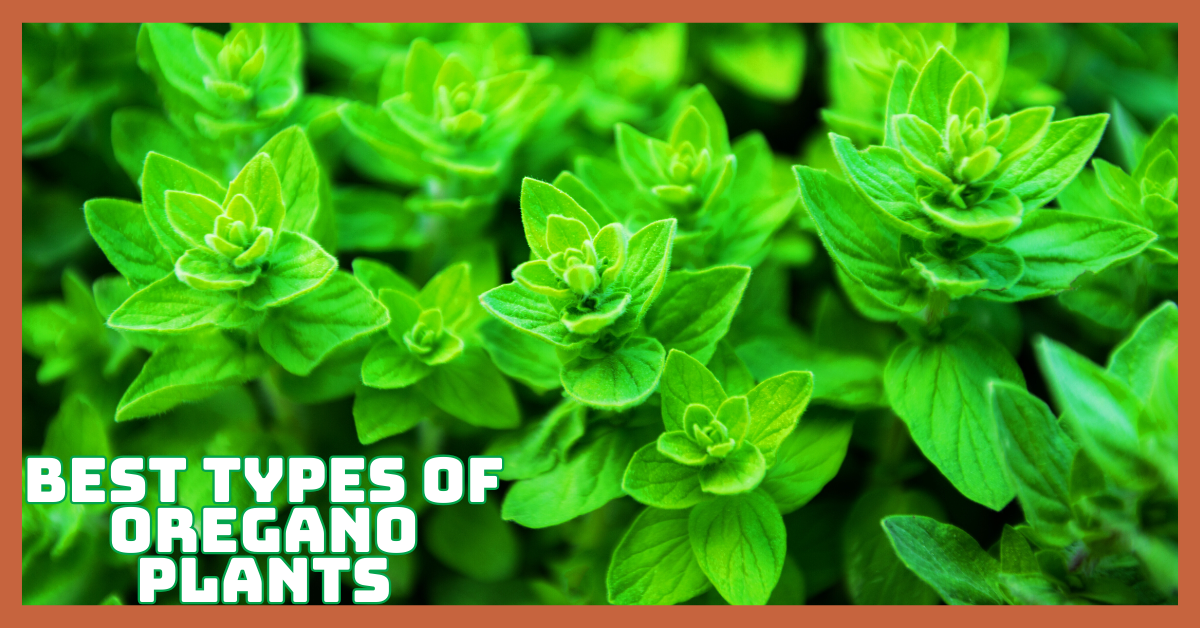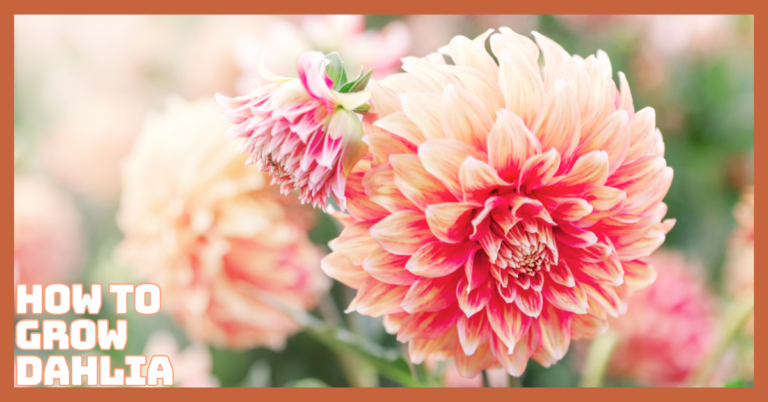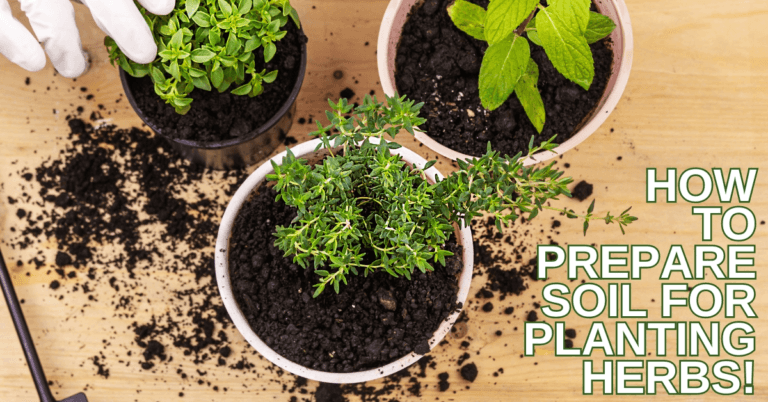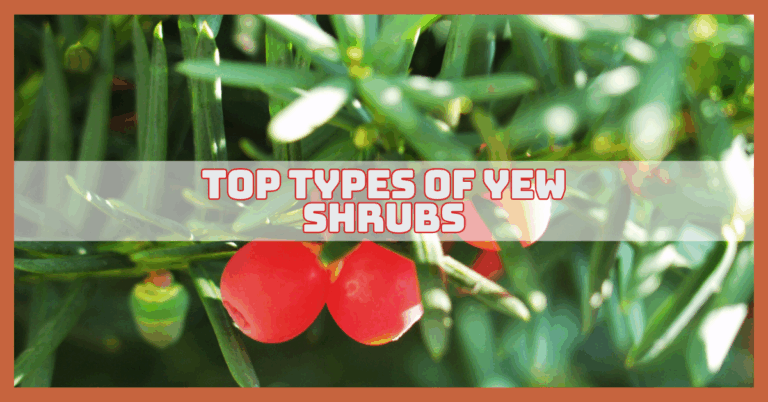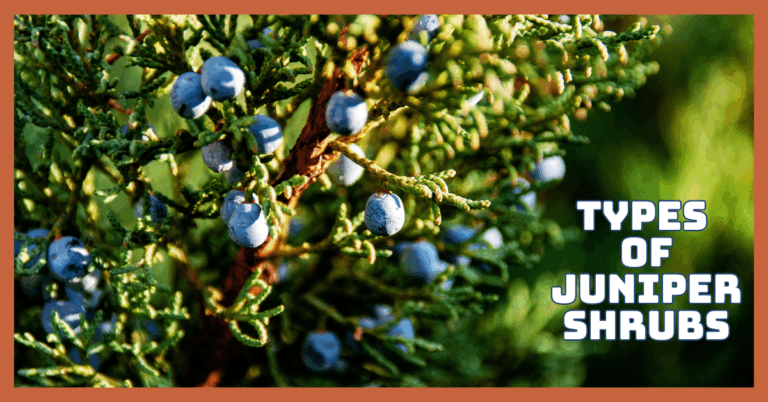Best Types Of Oregano Plants For A Thriving Herb Garden
Oregano is a staple herb in kitchens worldwide, treasured for its aromatic scent and bold, earthy flavour. But did you know there are many types of oregano plants, each with its own distinct character?
Whether you're growing oregano for cooking, medicinal purposes, or to enhance your garden, understanding the different varieties can help you choose the right plant.
This guide will cover the most well-known and unusual types of oregano plants, their flavours, the best growing environments, and their culinary and garden applications.
What Is Oregano?
Oregano is a flavourful and aromatic herb in the mint family, Lamiaceae. It is a Mediterranean native that has been used for generations in medicinal, culinary, and religious ceremonies. The plant can be grown yearly in colder areas but is a perennial in warmer climates.
Oregano typically features small, oval-shaped, green leaves and produces tiny flowers in shades of white, pink, or purple.
It is most famous for its bold, earthy, and slightly bitter flavour, which complements a wide range of savoury dishes, especially in Italian, Greek, and Mexican cuisines.
However, not all oregano is the same—many different species and cultivars have unique flavours, growth habits, and uses.
For example, Greek oregano is known for its robust taste, while Mexican oregano has citrusy undertones. Beyond the kitchen, oregano is valued for its antimicrobial and antioxidant properties and is often used in herbal teas, oils, and natural remedies. Its versatility and ease of growth make it a favorite among home gardeners and chefs.
Types Of Oregano Plants
Oregano belongs to the Lamiaceae (mint) family, but not all “oregano” is true oregano (Origanum). Some are close relatives with similar flavours. Here are the types of oregano:
1. Greek Oregano (Origanum vulgare subsp. hirtum)
Overview & Flavour
Greek oregano is a robust and pungent variety, considered the most flavourful type of oregano. It offers a warm, peppery taste with a hint of bitterness, making it a staple in Mediterranean dishes like grilled meats, sauces, and salads.
Appearance & Uses
This variety features fuzzy, gray-green leaves and small white flowers. It grows in compact clumps and is often dried or fresh in cooking. Greek oregano is ideal for tomato-based dishes, marinades, and savoury herb blends like za’atar and Italian seasoning.
How To Grow
Greek oregano thrives in full sun and well-drained soil, preferring a pH between 6.0 and 8.0. Plant it after the last frost in USDA zones 5–10.
Space plants 12–18 inches apart. Give the soil a modest amount of water, letting it dry between applications. Regular harvesting encourages bushier growth.
Prune after flowering to maintain shape and enhance flavour. It also grows well in containers and can be propagated through cuttings.
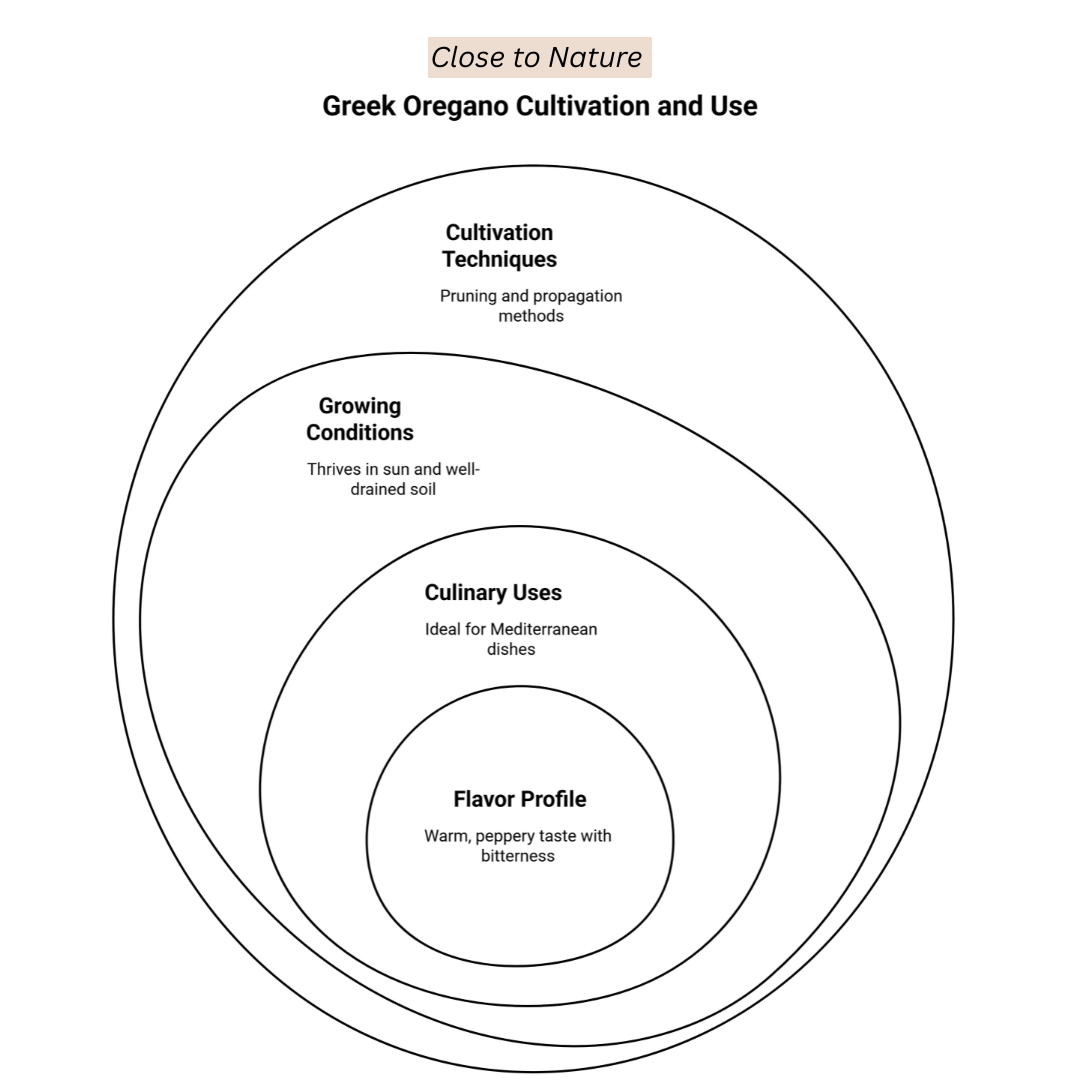
2. Italian Oregano (Origanum x majoricum)
Overview & Flavour
Italian oregano is a hybrid between sweet marjoram and Greek oregano. It offers a milder, sweeter flavour with subtle herbal and floral notes. Its balanced taste makes it perfect for Italian cuisine, especially pasta sauces, pizzas, and vegetable dishes.
Appearance & Uses
This variety has smooth, green leaves and produces pale pink or purple flowers. It forms a low-growing, bushy plant that is ideal for ornamental and culinary use. Commonly used fresh or dried, it blends well with basil, thyme, and parsley in various culinary applications.
How To Grow
Growing in USDA zones 6–10, Italian oregano thrives in full sun and well-drained soil. Plant after the last frost and space about 12 inches apart.
Water the soil when it appears dry, but avoid overwatering. Trim regularly to encourage dense growth and prevent flowering, which can reduce flavour intensity.
3. Common Oregano (Origanum vulgare)
Overview & Flavour
Common oregano is one of the many types of oregano plants. It offers a mild, slightly bitter flavour with earthy undertones, making it perfect for various European and American dishes.
It’s less intense than Greek oregano and is often used in European and American dishes, including soups, sauces, and roasted vegetables.
Appearance & Uses
This variety features oval-shaped green leaves and tiny pink or purple flower clusters. It grows in upright clumps and is popular in ornamental herb gardens. Often used fresh or dried, it’s excellent for light seasoning and herbal teas.
How To Grow
Well-drained soil with a pH of 6.0 to 8.0 and full sun are ideal growing conditions for common oregano. Plant it once the risk of frost has passed; it is appropriate for USDA zones 4–9. Space plants 12–18 inches apart.
Between waterings, let the soil dry out and then water it moderately. Regular trimming encourages bushy growth and better flavour. It’s a hardy perennial that grows well in garden beds and containers.
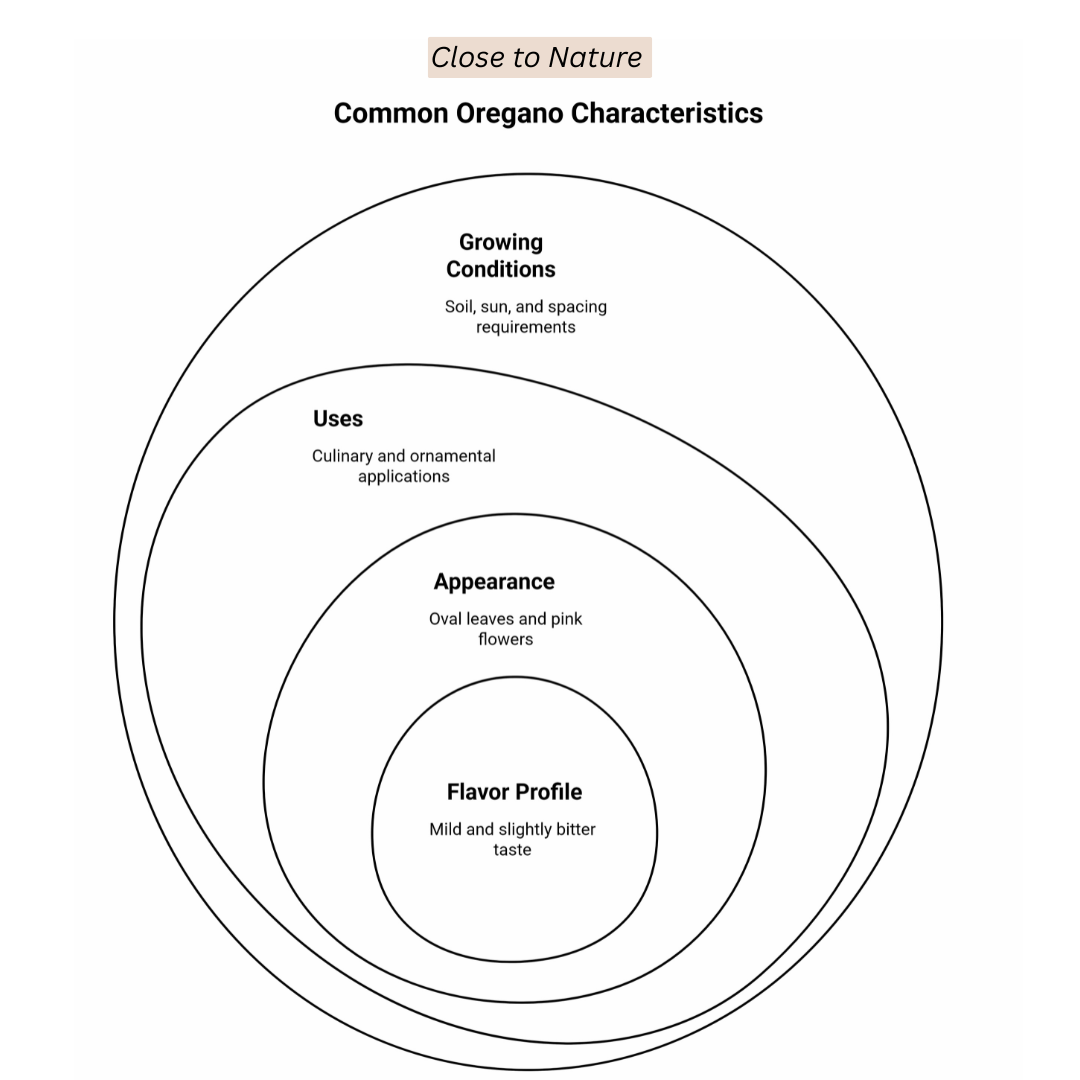
4. Mexican Oregano (Lippia graveolens)
Overview & Flavour
Mexican oregano is not true but offers a bold, citrusy flavour with hints of licorice and mild pepper. It’s stronger than Mediterranean varieties and is a staple in Latin American and Southwestern cuisines, perfect for chilli, tacos, and stews.
Appearance & Uses
This variety grows as a woody shrub with coarse, light green leaves and small white or yellowish flowers. It’s often used dried and pairs well with cumin and chilli. In addition to cooking, it’s used in herbal remedies and teas.
How To Grow
Mexican oregano thrives in hot, dry climates and full sun, ideal for USDA zones 9–11. Plant in well-draining sandy soil and water sparingly after establishment.
Space plants 18–24 inches apart. It’s drought-tolerant and prefers infrequent watering. To keep things in shape and promote growth, prune frequently.
This perennial shrub is best suited for xeriscaping or container gardening in cooler zones, where it can be overwintered indoors.
5. Syrian Oregano (Origanum syriacum)
Overview & Flavour
Syrian oregano is one of the distinctive types of oregano plants. It is known for its bold, earthy flavour with mint and citrus notes, making it a key ingredient in Middle Eastern cuisine.
It’s essential in Middle Eastern cuisine, especially in spice blends, breads, meats, and dips, where it provides an aromatic and savoury depth.
Appearance & Uses
This variety has fuzzy, gray-green leaves and clusters of small white flowers. It grows upright and bushy. Used fresh or dried, it’s most famous for its role in za’atar seasoning and is excellent for flavouring grilled dishes.
How To Grow
Syrian oregano prefers full sun and well-drained soil, thriving in USDA zones 9–11. Plant it after the last frost, spacing 12–18 inches apart.
Let the soil dry out in between waterings and use moderate water. Regular pruning promotes bushier growth and better leaf production.
It can be grown in beds or containers, and in cooler climates, bring it indoors during winter. Harvest leaves just before flowering for the best flavour.
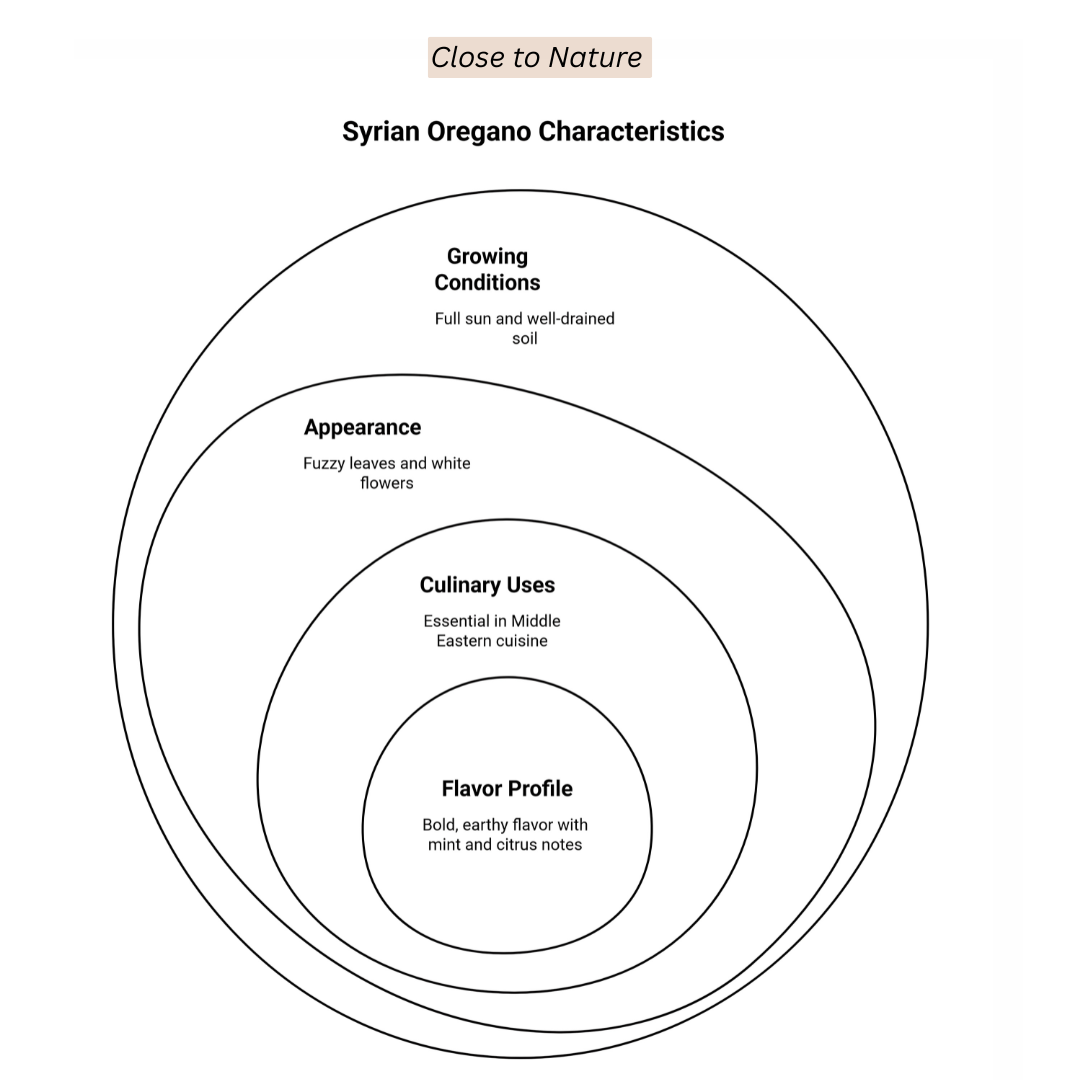
6. Sweet Marjoram (Origanum majorana)
Overview & Flavour
Sweet marjoram has a delicate, mildly spicy flavour with floral and pine-like notes. It’s more subtle than oregano, making it ideal for seasoning vegetables, soups, sauces, and poultry dishes without overpowering the other ingredients.
Appearance & Uses
This low-growing herb has soft, oval, gray-green leaves and small white or pinkish flowers. Sweet marjoram is commonly used both fresh and dried, and is a favourite in Mediterranean and French cuisine. It is also often used in herb blends and herbal teas.
How To Grow
Sweet marjoram thrives in full sun and well-drained soil, best suited for USDA zones 7–9. In cooler climates, it’s often grown annually.
Start from seed indoors or transplant after the last frost. Space plants 12 inches apart and water moderately. Pinch back stems to avoid early flowering and promote bushy growth. Harvest leaves regularly for culinary use, especially before flowering, for the best flavour and aroma.
Turn Your Passion for Nature Into Income
🌿 Whether you love gardening, caring for animals, or exploring holistic living,
You can share your knowledge online and earn from it.
Discover how nature lovers are growing their passions into meaningful, income-generating blogs. 👇
7. Golden Oregano (Origanum vulgare ‘Aureum')
Overview & Flavour
Golden oregano has a mild, slightly peppery flavour that complements various savoury dishes. While less pungent than other oreganos, its gentle aroma and taste make it great for seasoning meats, salads, pasta, and herb blends.
Appearance & Uses
This variety features bright golden-yellow foliage that adds ornamental appeal to herb gardens. It grows low and spreads, making it useful as a ground cover. The foliage is decorative and culinary, and it is used fresh or dried in dishes and garden borders.
How To Grow
Golden oregano thrives in full sun to partial shade and well-draining soil. Once established, it's ideal for USDA zones 5–9 and is drought-tolerant.
Space plants 12–18 inches apart and water moderately. Trim regularly to maintain compact growth and enhance leaf production.
Golden oregano also does well in containers or borders; its vibrant colour stands out. Harvest the leaves throughout the growing season, especially before flowering, for the best flavour and appearance.
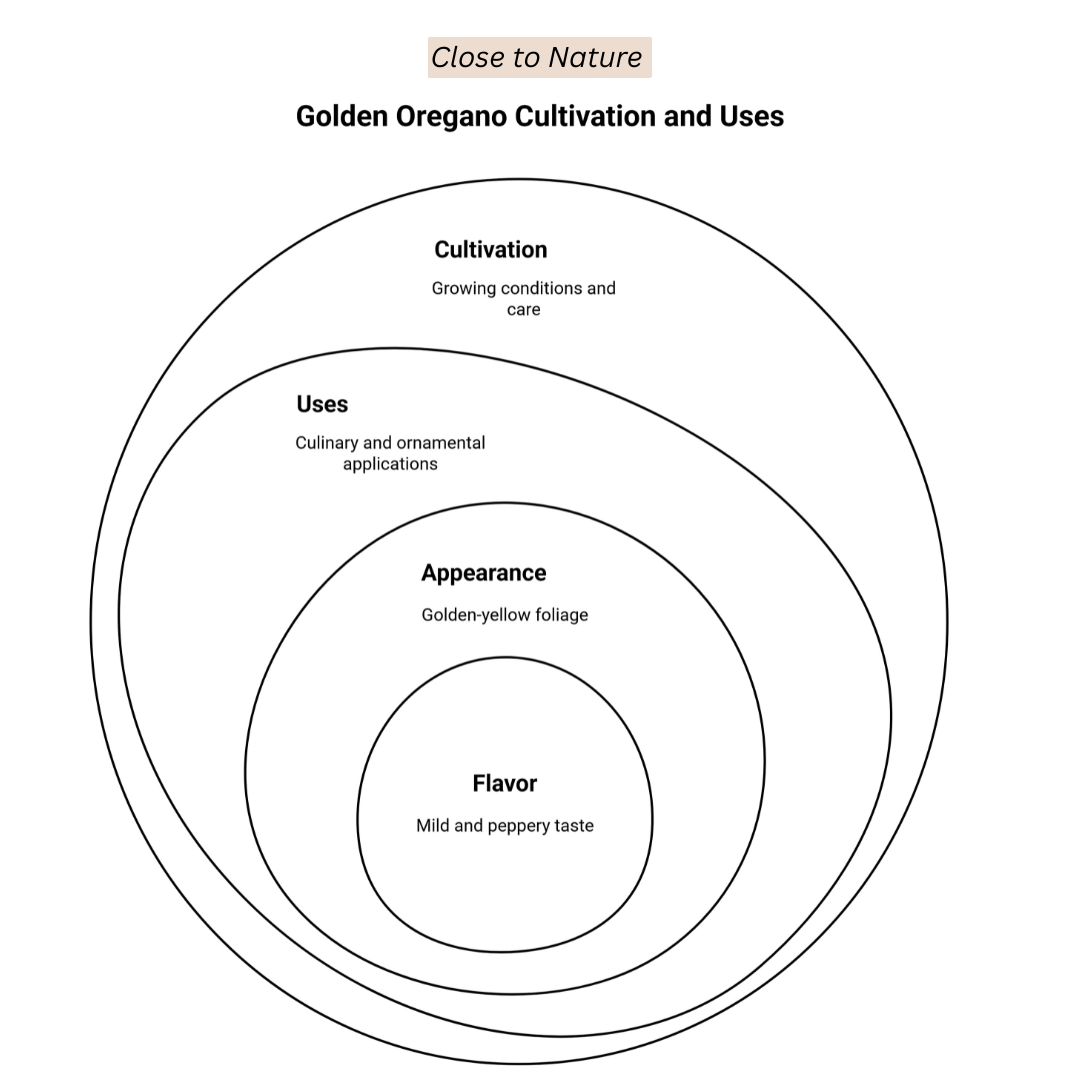
8. Kent Beauty Oregano (Origanum ‘Kent Beauty')
Overview & Flavour
Kent Beauty oregano is one of the delightful types of oregano plants known for its mild, slightly sweet flavour with subtle hints of citrus and mint.
It’s less pungent than traditional oregano, making it ideal for fresh dishes, salads, and garnishes where a delicate herbal flavour is desired.
Appearance & Uses
This variety features cascading, silvery-gray foliage with pink or purple flowers that add a decorative touch to herb gardens. It’s used as an ornamental plant in fresh or dried culinary applications.
How To Grow
Kent Beauty oregano prefers full sun and well-drained soil, thriving in USDA zones 4–9. It’s drought-tolerant once established.
Plant it 12–18 inches apart and water moderately. This trailing variety is perfect for containers or hanging baskets. Prune regularly to encourage bushier growth.
Harvest leaves early in the growing season before flowering for the best flavour and texture. It also adds charm to garden borders or rock gardens.
9. Dittany Of Crete (Origanum dictamnus)
Overview & Flavour
Dittany of Crete offers a unique, aromatic flavour with a blend of oregano and thyme notes. It's slightly bitter with a peppery edge. Dittany is prized in Mediterranean cuisine for its medicinal qualities and ability to add depth to savory dishes.
Appearance & Uses
This herb features soft, woolly, silvery-green leaves and pink or purple flowers, making it an attractive addition to the garden. It is often used in herbal remedies and is popular in Mediterranean dishes, particularly in stews and soups.
How To Grow
Dittany of Crete thrives in full sun and well-drained soil, preferring dry conditions. It grows best in USDA zones 6–9 and is typically grown as a perennial.
Pinching back stems will prevent early flowering and encourage bushy growth. This herb benefits from occasional pruning to maintain its shape and to avoid legginess. It is well-suited to containers, rock gardens, or herb beds and is drought-tolerant once established.

10. Compact Oregano (Origanum vulgare ‘Compactum')
Overview & Flavour
Compact oregano is one of the versatile types of oregano plants. It offers a robust, earthy flavour with a milder and more refined taste than traditional oregano.
It’s perfect for seasoning Mediterranean dishes, sauces, meats, and pizzas, adding depth without overwhelming the other ingredients.
Appearance & Uses
This compact variety forms dense, bushy mounds of green leaves, making it ideal for small spaces. It’s used fresh and dried, flavouring culinary dishes and serving as an attractive garden herb.
How To Grow
Compact oregano thrives in full sun and well-drained soil, suitable for USDA zones 4–9. Once established, it’s drought-tolerant.
To encourage bushy growth, place the leaves 8 to 12 inches apart. Let the soil dry out between waterings, and use moderate water.
Trim back regularly to encourage dense foliage. It's ideal for containers, raised beds, or small herb gardens, and it’s easy to manage and maintain its shape. Harvest leaves before flowering for the best flavour.
11. Turkey Oregano (Origanum onites)
Overview & Flavour
Turkey oregano is one of the bold types of oregano plants, known for its robust, earthy flavour and slightly sweet, pungent aroma.
It is commonly used in Mediterranean and Turkish cuisine, adding a strong herbal flavour to dishes such as stews, grilled meats, and vegetables.
Appearance & Uses
This variety has dense, bushy growth with oval, aromatic green leaves. It produces small white or purple flowers. It’s ideal for cooking and is also used in herbal remedies, providing culinary and medicinal benefits.
How To Grow
Turkey oregano thrives in full sun and well-drained, dry soil. It prefers USDA hardiness zones 5–9. Space plants 12–18 inches apart.
Let the soil dry out in between waterings and use moderate water. Prune regularly for better growth. Once established, it’s drought-tolerant and grows well in containers or herb gardens.
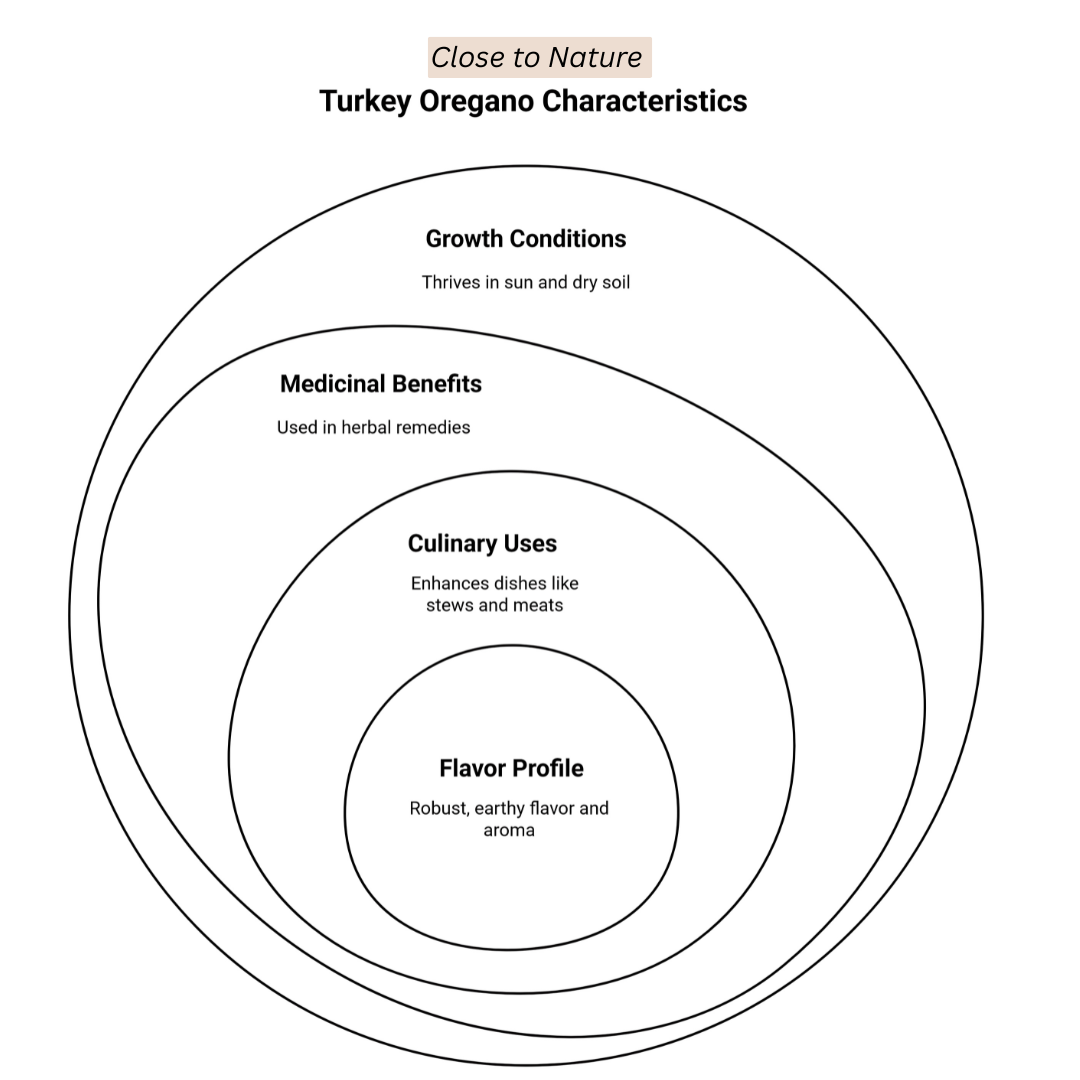
12. Wild Marjoram (Origanum vulgare subsp. vulgare)
Overview & Flavour
Wild marjoram has a strong, earthy flavour with a hint of sweetness and a peppery kick. It is often used in Mediterranean cuisine to enhance the taste of sauces, meats, stews, and roasted vegetables by adding depth.
Appearance & Uses
The plant features small, aromatic green leaves and delicate purple flowers. Wild marjoram is used in cooking, herbal remedies, and teas and is valued for its digestive, anti-inflammatory, and calming properties.
How To Grow
Wild marjoram prefers full sun and well-drained, slightly dry soil. It thrives in USDA zones 4–9. Space plants 12–18 inches apart and water moderately, allowing the soil to dry between waterings.
Prune regularly for healthy growth and better flavour. Once established, it’s drought-tolerant and perfect for herb gardens or containers.
13. Sweet Oregano (Origanum vulgare ‘Serrata')
Overview & Flavour
Sweet oregano is a fragrant variety of the oregano plant. It offers a milder, sweeter flavour with hints of citrus and mint. It adds a gentle herbal note to soups, salads, and grilled vegetables, offering a more delicate alternative to regular oregano.
Appearance & Uses
This variety features soft, rounded green leaves and small white flowers. It’s commonly used in Mediterranean and Italian cooking, herbal teas, and natural remedies for its digestive benefits.
How To Grow
Sweet oregano thrives in full sun and well-drained, moderately fertile soil. It prefers USDA hardiness zones 5–9. Space plants 12–18 inches apart—water moderately, allowing soil to dry between waterings.
Prune regularly to promote healthy growth. It’s ideal for herb gardens or containers, offering a fragrant addition to your garden with minimal care.
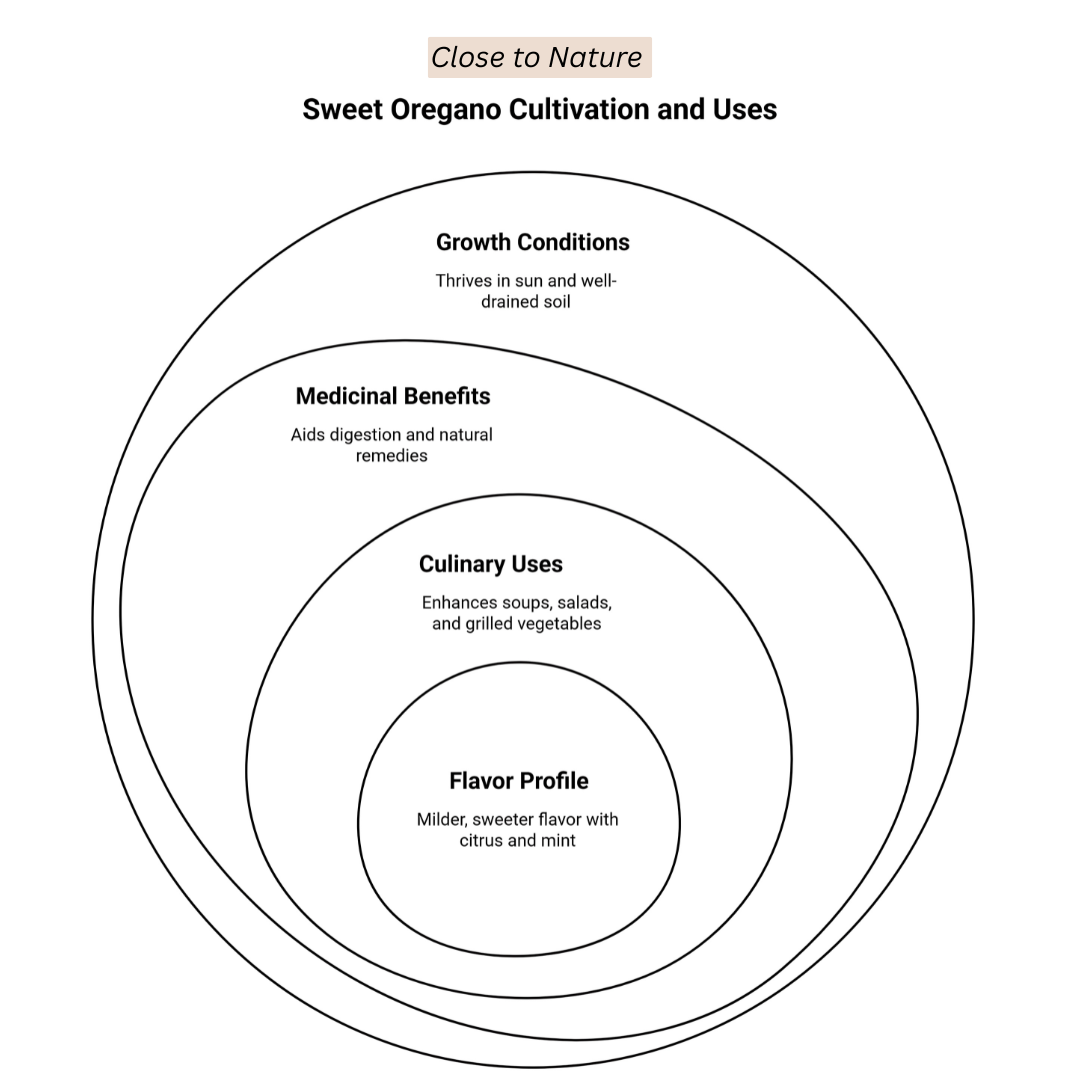
14. Oregano ‘Hot and Spicy'
Overview & Flavour
Oregano ‘Hot and Spicy' has a bold, fiery flavour with a sharp, peppery kick. It is ideal for adding heat to Mediterranean, Mexican, and Italian dishes. Its intense flavour profile elevates sauces, meats, and stews.
Appearance & Uses
This variety has small, dark green leaves and produces clusters of purple flowers. It’s commonly used in cooking, especially for spicy dishes, and in herbal remedies for its digestive and anti-inflammatory properties.
How To Grow
Oregano Hot and Spicy thrives in full sun and well-drained, slightly dry soil. It is in USDA hardiness zones 4–9. Space plants 12–18 inches apart. Let the soil dry out between waterings.
Prune regularly to maintain the desired shape and promote healthy growth. It’s ideal for herb gardens or containers and is drought-tolerant once established.
15. Creeping Oregano
Overview & Flavour
Creeping oregano is one of the versatile types of oregano plants. It has earthy undertones and a mellow, slightly sweet flavour.
Its tender leaves are perfect for adding a subtle herbal note to salads, soups, and Mediterranean dishes, making it a versatile addition to any meal.
Appearance & Uses
This variety features low-growing, spreading stems with small, round, aromatic leaves and tiny pink or purple flowers. It’s ideal for ground cover, herb gardens, or containers and offers culinary and decorative value.
How To Grow
Creeping oregano prefers full sun and well-drained, dry soil. It thrives in USDA zones 4–9. Space plants 6–12 inches apart as they spread. Let the soil dry out between waterings.
It’s low-maintenance and drought-tolerant, making it an excellent choice for ground covers or rock gardens. Regular pruning ensures healthy growth and better flavour.
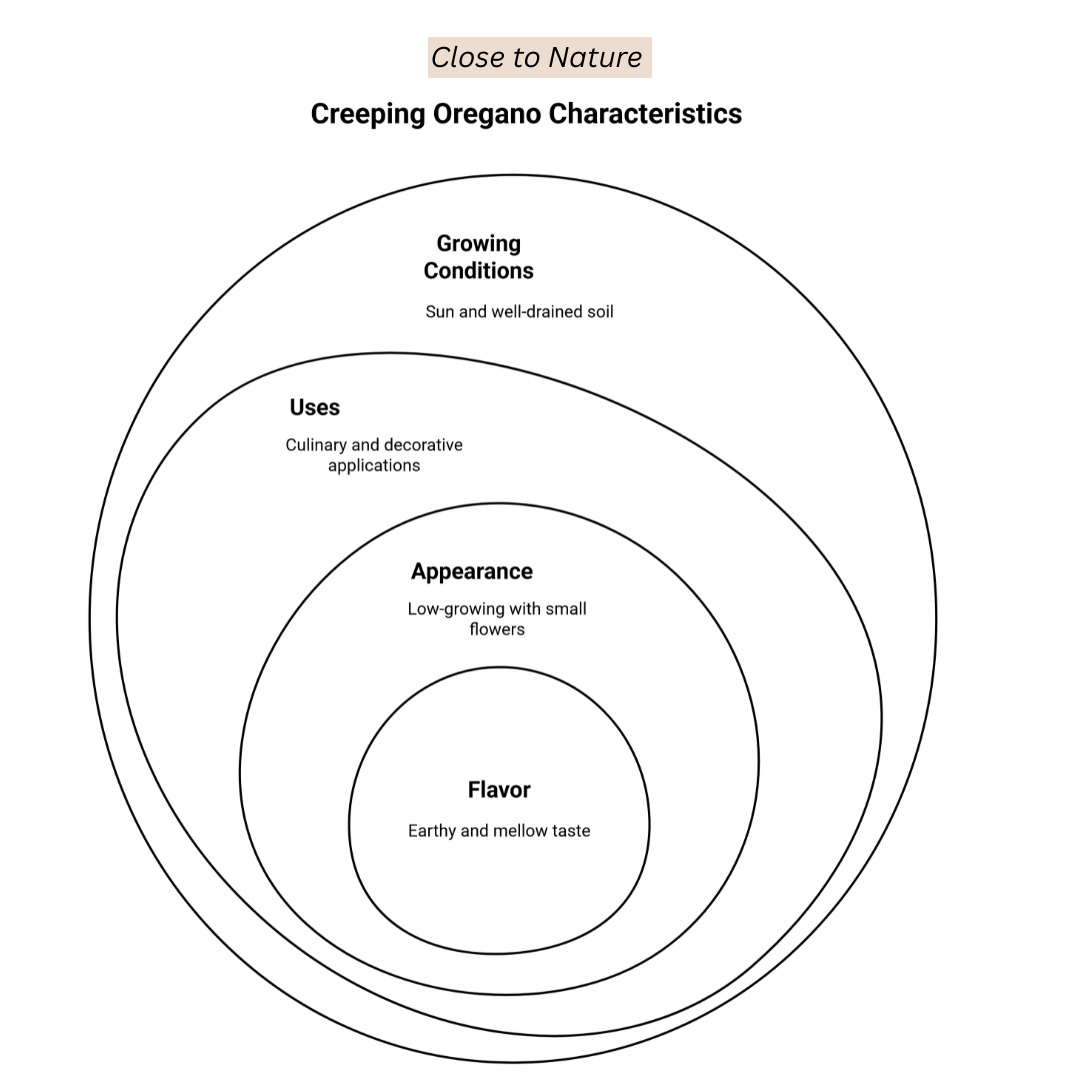
Conclusion
In conclusion, the diverse types of oregano plants offer unique flavours, appearances, and uses, making them valuable to any garden or kitchen.
Whether you prefer the classic taste of Greek oregano or the heat of ‘Hot and Spicy,' there's a variety to suit every culinary need.
With proper care, these oregano varieties will thrive and enhance your dishes with their aromatic, robust flavours throughout the growing season.
I trust you enjoyed this article on the Best Types of Oregano Plants For A Thriving Herb Garden. Please stay tuned for more inspiring guides, helpful tips, and ideas to help you live closer to nature every day.
Take care!
— JeannetteZ
💬 Your Opinion Is Important To Me
Do you have thoughts, ideas, or questions? I’d love to hear from you. Please leave your comments below or email me directly at Jeannette@Close-To-Nature.org.
📚 More Nature-Inspired Reads
Explore more ways to connect with nature, nurture your pets, and live in harmony with the world around you 🌿

